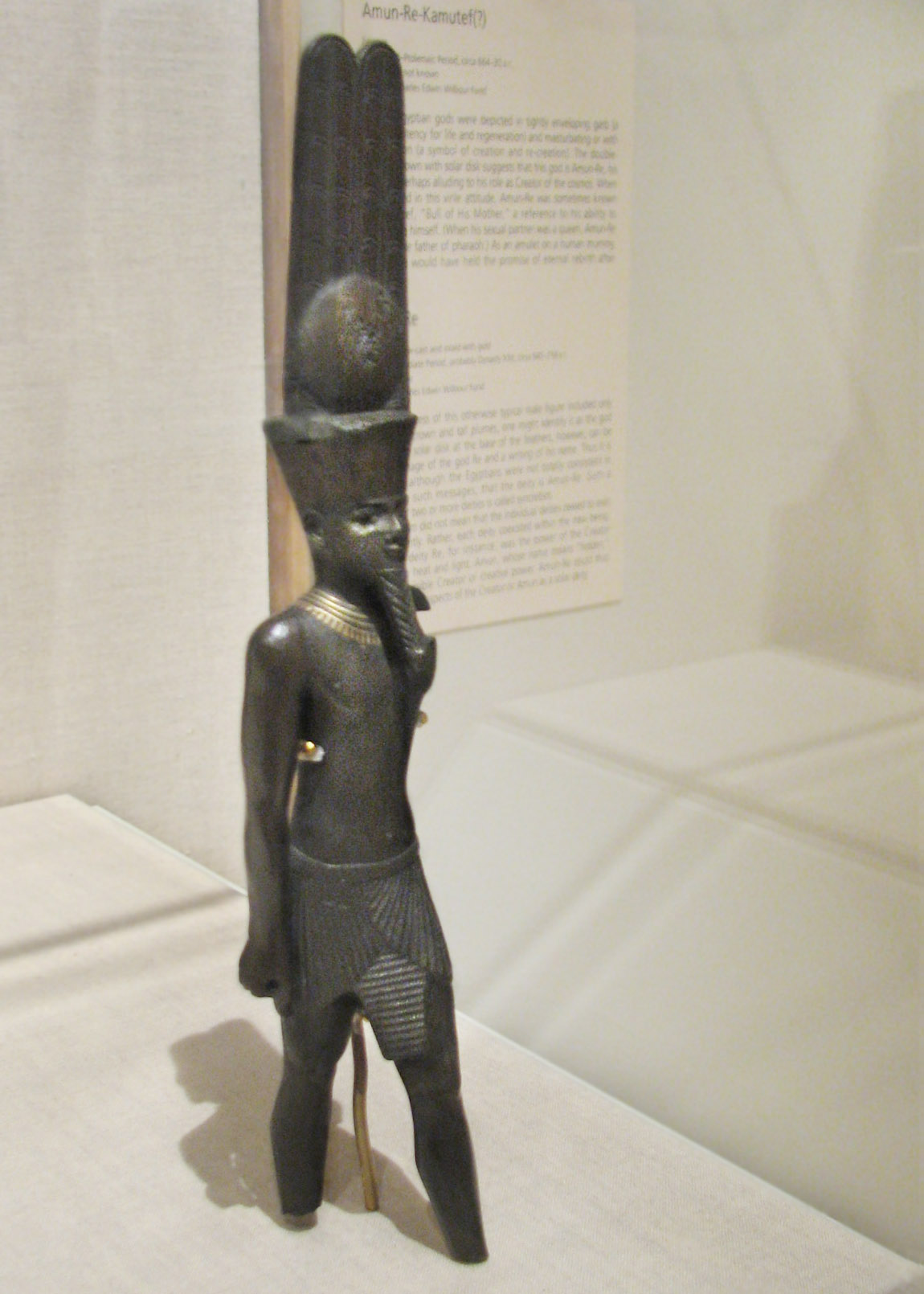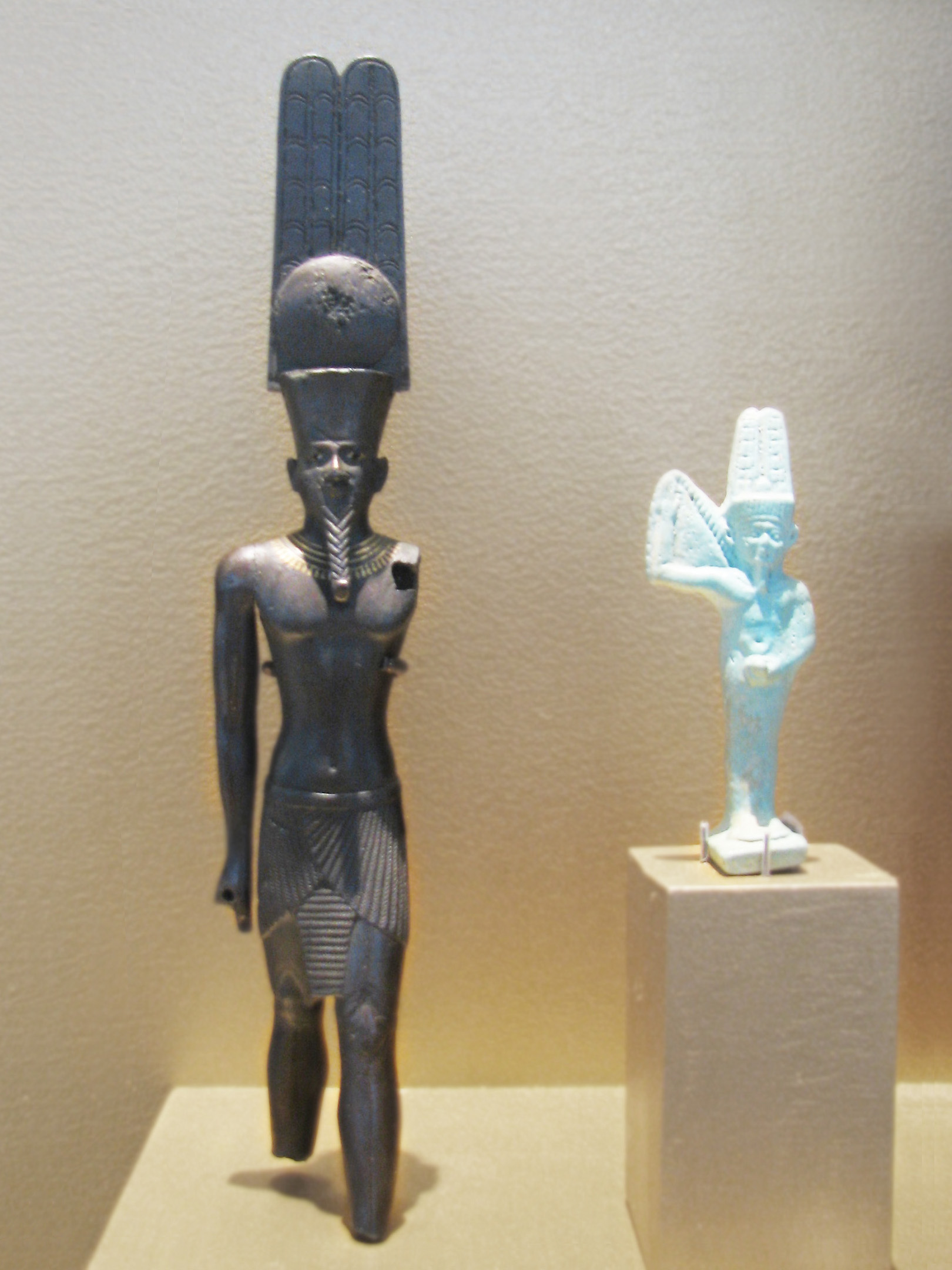(From the info card):
"If the headdress of this otherwise typical male figure included only the caplike crown and tall plumes, one might identify it as the god Amun. The solar disk at the base of the feathers, however, can be both an image of the god Re and a writing of his name. Thus it is probable, although the Egyptians were not totally consistent in conveying such messages, that the deity is Amun-Re. Such a merging of two or more deities is called syncretism.
"Syncretism did not mean that the individual deities ceased to exist independently. Rather, each deity coexisted within the new being. The solar deity Re, for instance, was the power of the Creator tangible in heat and light. Amun, whose name means "hidden," was the invisible Creator or creative power. Amun-Re could thus represent both aspects of the Creator or Amun as a solar deity."
"A god whose name itself suggests that the visible sun god, Re, is now also bound up with the hiddenness of existence." _Hathor Rising_, by Alison Roberts, page 73
Erik Hornung explains:
"In the southern kingdom, whose vitality would eventually win out over the cultural refinement of the north, the brief regin of Inyotef III (2016-2008 B.C.E.) ran its course essentially in peace. One of this officials was the first to have what would be the programmatic name of four kings of Dynasty 12: Amenemhet, which means 'Amun is at the forefront.' Amun, whose origin and original nature can no longer be ascertained with certainly, had developed into the leading deity of the Theban nome, along with Montu, and thus of the southern kingdom; he is attested at Karnak, his perferred sanctuary, beginning with the reign of Inyotef II. In the process, he took on the characteristices of other gods, such as the fertility aspect of Min of Koptos, but especially the creative role of the sun god, whose divine abundance enabled him to become Amun-Re, guider of the cosmos. With Amun's assumption of this role, the Egyptian pantheon achieved the form it was to maintain for the long term." _History of Ancient Egypt_, page 46




